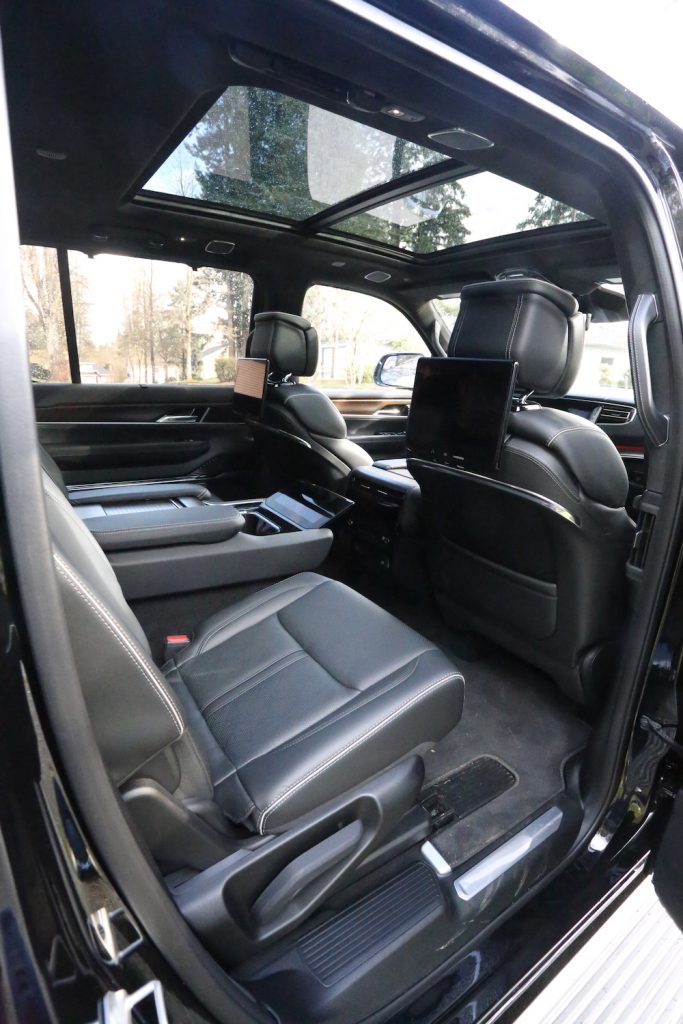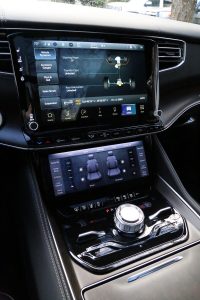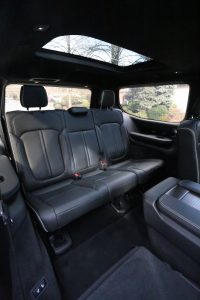If you’ve been following the old car market over the past few months, you’ve probably already noticed some serious pricing movement on Jeep’s woodgrain-covered Grand Wagoneers from the 1980s. These trucks have been on the rise for a while, but January 2022 pricing took them even higher. Mecum sold one 1986 model — albeit very nicely restored — for $154,000 in Kissimmee. Six-figure prices are the norm on the best examples.
The classic market loves SUVs right now, but so does the new car market. Nostalgia is powering some of it (I’m looking at you, Ford Bronco), but so too does all-out luxury and serious capability in a daily use package.
With that, I bring you the 2022 Grand Wagoneer. Sans woodgrain appliqué.

This is a swing at rebuilding the old Jeep icon, which I’ve heard called the very first SUV more in the past few months than ever before. We can argue about that later, but what isn’t in question is the chops on the new version. This is a seven-passenger Hemi-powered Lear jet on wheels, with adjustable suspension, capable 4×4 abilities with a low crawl ratio, top-level interior fittings and enough screens to keep even the most tech-savvy back seat drivers busy while you ford the river between you and the grade school. Anything more than two feet is going to require a boat — but two feet and under? The Grand Wagoneer will get you through it.

First things first. Don’t call it a Jeep. This is a “premium extension of the Jeep brand,” but the only place it says “Jeep” is on the windshield glass. This is a Grand Wagoneer, not that you’ll forget it. Bold text on the tailgate, doors, hood, dash, steering wheel and beyond stake a strong claim on a hill already owned by Denali and Escalade. It even shines it on the ground from either mirror whenever you unlock it in the dark. And if you do somehow forget it, you’ll be reminded again when every Grand Cherokee owner stops you to ask about it. Pro tip: There are a lot of them, so be ready.

There’s also a standard Wagoneer version, without as much of the tech but with most of the same capabilities.

Powering all this in the Grand Wagoneer is the 6.4 Hemi V8 and TorqueFlite 8-speed auto, which FCA/Stellantis has basically perfected over the past ten years. The Grand Wagoneer may look like an SUV on the outside, but that Hemi starts with a snarl — there’s obvious Dodge Scat Pack DNA underneath all that leather. The 6.4 makes 471 hp and barks enough to turn heads at stoplights. It also makes this obviously heavy SUV into something of a rocket. The GW may have been designed to haul the whole family in tremendous comfort, but it also nods to what Mom and Dad drove back in the days before kids, too. This is muscly underneath, and it drives more like a car with big power than the heavy body-on-frame truck that it is. That’s an accomplishment.
As for tech, this rig is designed to be at the forefront of the American SUV market, so it has all the standard features, plus more. My tester had lane keeping assist (which watches the painted road lines and will somewhat alarmingly intervene to keep you between them), adaptive cruise, terrain management, adjustable suspension, trailer hitch line-up assist, rear screens with built-in Amazon Fire TVs, heated/cooled/massaging front seats and a 1,375-watt McIntosh sound system. And thanks to its overall length and width, it has fantastic legroom for everyone — yes, even those way back in the third row. Even more tech is coming for later models, including hands-free lane assist.
It even has the woodgrain — but it’s all inside this time.

Some notes from living with one for a week: I noted average MPGs coming in at around 13, which is what you might expect for a heavy, Hemi-powered SUV — or that old ’86. Still, this would be a fantastic tow rig for your classic. Inside, the seats all fold flat for impressive cargo capacity, but you’ll never pack this thing with lumber. Automatic folding steps are smart in that they’re hidden in the rockers when not deployed, and they’re wide enough for boots — if a little too slow for quick entry and exit.
So, what’s one cost? Well, that’s the sticking point, but you shouldn’t be surprised. Prices here start at $88k for a Series I and top out at $108k for a Series III, and options can push that pricing even higher. But then again, if the originals are now six-figure trucks, it stands to reason that the new ones would be, too — especially considering the current comps in the luxury SUV segment.
By the time the third Jeep owner asked me if it was worth the asking price, I had a good answer. “It depends,” I said. “Would you rather have a Wrangler and a Charger, or do you want one well-equipped and super comfortable vehicle that does it all?”
He thought about it for a minute, nodded, and then walked away.

Ratings:
High Point: Luxury, comfort, capability.
Low Point: Price. Fuel use.
Final Word: This feels like the ultimate American SUV in every way, for better or worse.
Drivability: *****
Fun factor/appearance: ***
Overall: ****
(***** is best)













More Stories
Ferrari Beverly Hills Introduces The Registry
TWR Launches the V12 Supercat
Gateway Bronco Launches 1966-77 Shelby Sport SUV